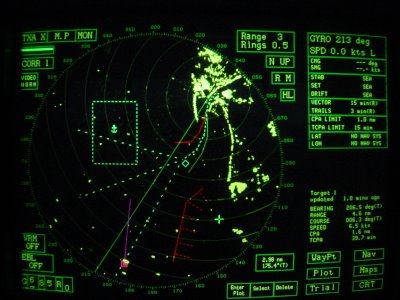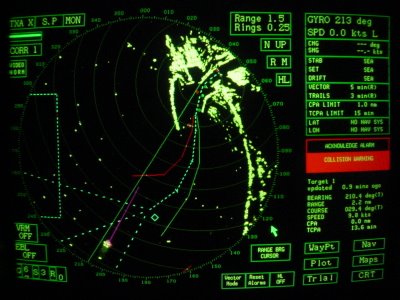
Shore Based Pilotage is, according to the Portuguese law, defined as the pilotage service provided to the ship, from an external location, until a position that allows the safe embarkation of the pilot.
It is usually performed when the sea conditions are so bad that the pilot boat can’t sail outside the bar or the pilot can’t safely climb onboard.
The ship’s captain will, after accepting this kind of service, follow the pilot’s instructions for the approach to the port where the pilot will board at the entrance.
In Viana do Castelo, where there are no VTS services, the shore based pilotage service is provided with the help of the pilot station radar. One of the pilots waits on the pilot boat at the entrance until being able to board and other pilot provides the approaching vessel with the relevant information (course and speed).
This service is provided only after a careful analysis of the ships, taking into account the ship type, the power of the main engine, gross tonnage, type of propulsion and whether or not the captain has previously called the port. All these measures are necessary because it is not always easy to cross the bar under heavy weather.
At our port we have decided also to limit this service to vessels under 115m LOA, less than 6,50m draft and during daylight only.
It is usually performed when the sea conditions are so bad that the pilot boat can’t sail outside the bar or the pilot can’t safely climb onboard.
The ship’s captain will, after accepting this kind of service, follow the pilot’s instructions for the approach to the port where the pilot will board at the entrance.
In Viana do Castelo, where there are no VTS services, the shore based pilotage service is provided with the help of the pilot station radar. One of the pilots waits on the pilot boat at the entrance until being able to board and other pilot provides the approaching vessel with the relevant information (course and speed).
This service is provided only after a careful analysis of the ships, taking into account the ship type, the power of the main engine, gross tonnage, type of propulsion and whether or not the captain has previously called the port. All these measures are necessary because it is not always easy to cross the bar under heavy weather.
At our port we have decided also to limit this service to vessels under 115m LOA, less than 6,50m draft and during daylight only.


A vessel approaching Viana do Castelo as seen from the pilot station' radar
No comments:
Post a Comment